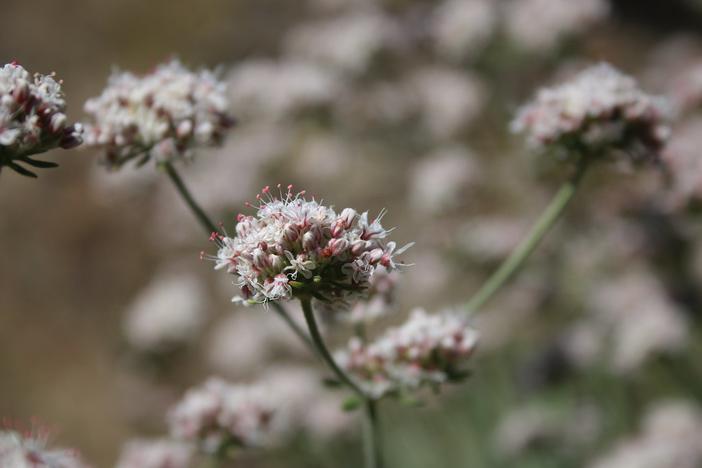Interior California Buckwheat
(Eriogonum fasciculatum var. polifolium)
Interior California Buckwheat (Eriogonum fasciculatum var. polifolium)
/
/

Joe Decruyenaere
CC BY-SA 2.0
Image By:
Joe Decruyenaere
Recorded By:
Copyright:
CC BY-SA 2.0
Copyright Notice:
Photo by: Joe Decruyenaere | License Type: CC BY-SA 2.0 | License URL: https://creativecommons.org/licenses/by-sa/2.0/ | Uploader: joedecruyenaere | Publisher: Flickr





















Estimated Native Range
Summary
Eriogonum fasciculatum var. polifolium, commonly known as Interior California Buckwheat, is an evergreen shrub native to the chaparral and desert scrub communities of the Southwestern United States, specifically in California, Nevada, and Arizona. It typically grows to a height and width of up to 50 cm (20 inches), forming a compact, rounded shape. The plant is characterized by its grey foliage, narrow, needle-like leaves that are clustered along the branches and its woody stems that become gnarled with age. From late spring through fall, it produces clusters of small, pom-pom-like flowers that range in color from white to pink, which are highly attractive to butterflies and other pollinators. The flowers are quite showy and contribute to the plant’s ornamental value.
Eastern Mojave Buckwheat is valued for its drought tolerance and ability to thrive in harsh, dry environments, making it an excellent choice for xeriscaping and native plant gardens. It is also used for erosion control on slopes and in restoration projects. This buckwheat prefers full sun and requires well-drained soils, often found in rocky or sandy conditions. Though slow growing, it is low-maintenance, needing minimal supplemental water once established. While generally pest and disease-free, overwatering can lead to root rot.CC BY-SA 4.0
Eastern Mojave Buckwheat is valued for its drought tolerance and ability to thrive in harsh, dry environments, making it an excellent choice for xeriscaping and native plant gardens. It is also used for erosion control on slopes and in restoration projects. This buckwheat prefers full sun and requires well-drained soils, often found in rocky or sandy conditions. Though slow growing, it is low-maintenance, needing minimal supplemental water once established. While generally pest and disease-free, overwatering can lead to root rot.CC BY-SA 4.0
Plant Description
- Plant Type: Shrubs
- Height: 1-3 feet
- Width: 3-4 feet
- Growth Rate: Moderate
- Flower Color: Pink, White
- Flowering Season: Spring, Summer, Fall
- Leaf Retention: Evergreen
Growth Requirements
- Sun: Full Sun
- Water: Low
- Drainage: Fast
Common Uses
Butterfly Garden, Deer Resistant, Drought Tolerant, Low Maintenance, Rabbit Resistant, Rock Garden, Street Planting
Natural Habitat
Native to chaparral and desert scrub communities in the Southwestern United States
Other Names
Common Names: Eastern Mojave Buckwheat , Flattop Buckwheat , Mojave Buckwheat
Scientific Names: Eriogonum fasciculatum var. polifolium , Eriogonum fasciculatum subsp. polifolium , Eriogonum fasciculatum var. revolutum , Eriogonum polifolium , Eriogonum revolutum
GBIF Accepted Name: